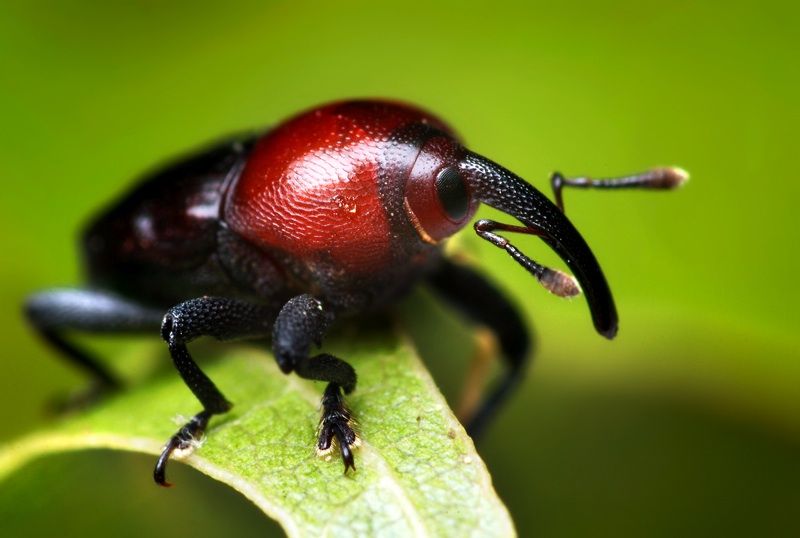|
|
Insect Macro Photography
|
Although pest insects attract the most attention, many insects are beneficial to the environment and to humans. Some insects, like wasps, bees, butterflies, and ants, pollinate flowering plants. Pollination is a mutualistic relationship between plants and insects. As insects gather nectar from different plants of the same species, they also spread pollen from plants on which they have previously fed. This greatly increases plants' ability to cross-pollinate, which maintains and possibly even improves their evolutionary fitness. This ultimately affects humans since ensuring healthy crops is critical to agriculture. A serious environmental problem is the decline of populations of pollinator insects, and a number of species of insects are now cultured primarily for pollination management in order to have sufficient pollinators in the field, orchard or greenhouse at bloom time. Insects also produce useful substances such as honey, wax, lacquer and silk. Honey bees have been cultured by humans for thousands of years for honey, although contracting for crop pollination is becoming more significant for beekeepers. The silkworm has greatly affected human history, as silk-driven trade established relationships between China and the rest of the world.
Insects play important roles in biological research. For example, because of its small size, short generation time and high fecundity, the common fruit fly Drosophila melanogaster is a model organism for studies in the genetics of higher eukaryotes. D. melanogaster has been an essential part of studies into principles like genetic linkage, interactions between genes, chromosomal genetics, development, behavior, and evolution. Because genetic systems are well conserved among eukaryotes, understanding basic cellular processes like DNA replication or transcription in fruit flies can help to understand those processes in other eukaryotes, including humans. The genome of D. melanogaster was sequenced in 2000, reflecting the organism's important role in biological research.
Insectivorous insects, or insects which feed on other insects, are beneficial to humans because they eat insects that could cause damage to agriculture and human structures. For example, aphids feed on crops and cause problems for farmers, but ladybugs feed on aphids, and can be used as a means to get significantly reduce pest aphid populations. While birds are perhaps more visible predators of insects, insects themselves account for the vast majority of insect consumption. Without predators to keep them in check, insects can undergo almost unstoppable population explosions.
Many insects, especially beetles, are scavengers that feed on dead animals and fallen trees and thereby recycle biological materials into forms found useful by other organisms. Insects are responsible for much of the process by which topsoil is created. The ancient Egyptian religion considered dung beetles sacred, and represented them as beetle-shaped amulets, or scarabs. Dung beetles have been used in countries including Australia as an agent of biological pest control to reduce the populations of pestilent flies and parasitic worms. The Australian Dung Beetle Project successfully introduced 23 species of dung beetle, including Onthophagus gazella and Euoniticellus intermedius from South Africa and Europe. This resulting in a 90% reduction in bush flies as well as improved soil fertility and quality.
|
|









